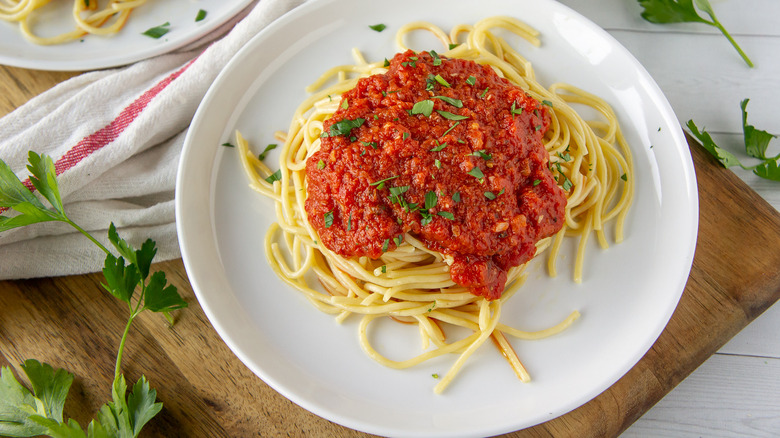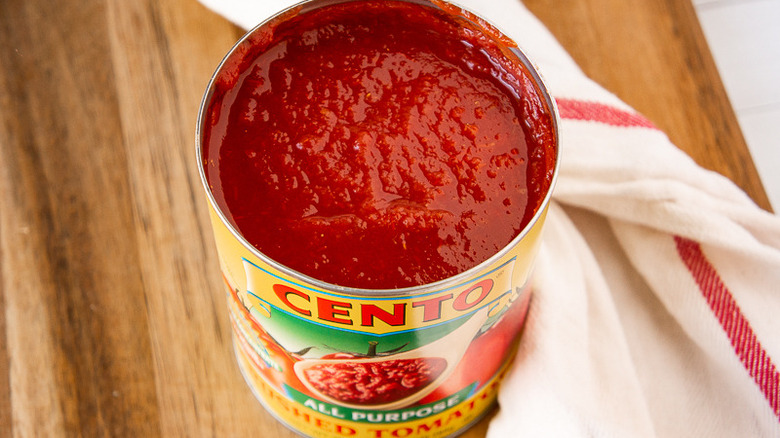For A Fast Marinara Sauce, Turn To Canned Crushed Tomatoes
While many cooking experts (self-proclaimed and otherwise) tend to get all sneery when the subject of canned produce comes up, most will eventually admit that there's one notable exception to the "fresh is always best" rule, that being canned tomatoes. While fresh ones work best in a salad, the canned kind are far better for cooking as they just taste, well, more tomato-ey. The canning seems to concentrate the flavor, while it also thickens up the tomatoes — sauces made from fresh ones tend to be thin and watery with a flat, disappointing taste.
For her fast marinara sauce recipe, developer Mikayla Marin likes to use canned crushed tomatoes, telling us, "They have some texture, but not so much that a quick few pulses from an immersion blender won't create an ideal marinara sauce." Of course, the pulsing and the immersion blender are both optional, since there's no rule that says a marinara can't be slightly chunky. Marin also offers a few other options, noting, "You can also use tomato puree, diced tomatoes, and even whole tomatoes to make a stovetop tomato sauce." If you opt for the whole ones, however, you will need to do a certain amount of crushing as the sauce cooks. Whichever kind of canned tomatoes you choose, there's no cause for concern that they'll be unsafe to eat. Not only are most cans BPA-free these days, but according to the FDA, reports about the dangers posed by this chemical may have been greatly exaggerated.
If you want to sweeten the tomatoes, roast garlic does the trick
There are those, Marin included, who feel that marinara sauce needs to be sweeter than tomatoes alone can make it. To that end, some recipes call for the addition of sugar, which is an ingredient many store-bought marinaras contain, as well. While Marin does suggest adding sugar to the sauce, or perhaps a sweet kind of vinegar, her recipe does not list either of these as a mandatory ingredient. Instead, she sweetens her sauce with the addition of some aromatics, these being a sweet onion and a head of roast garlic.
While traditional marinara sauces are made with sauteed garlic (and no onion), Marin's is unusual in that she specifies that the garlic needs to be roasted, instead. Her reason, as she explains it, is that "by slow roasting whole heads of garlic in the oven, the cloves tenderize and become buttery, sweet, and packed with delicious roasted garlic flavor." Of course, the garlic roasting process does add an hour or so to what is meant to be a 15-minute recipe, so as a workaround, she allows, "You can totally use the pre-made squeeze tube of roasted garlic that hangs out in the herb section at your grocery store too."

